Rhinoplasty is a special surgical operation, which is performed to correct innate or acquired nasal damage, as well as a total increase in the missing parts of the nose.
Rhinoplasty work lies in the fact that the surgeon changes nasal parameters in the invasion of the nasal bone-charyashny frame.
The main task of such an operation is to return the correct form of the nose to the person who violated even before birth, due to illness or through acquired nose injury.
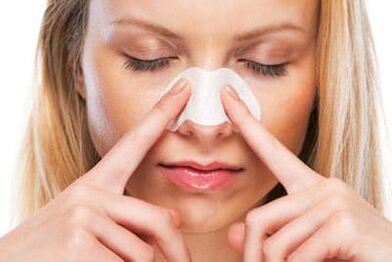
Rhinoplastic types
Today the world uses such types of rhinoplastics of the nose:
- Septoplastika;
- closed rhinoplasty;
- Open rhinoplasty;
- Rhinoplasty on secondary behavior;
- rhinoplasty without surgery;
- Rhinoplasty when using fillers;
- rhinoplasty using special auxiliary drugs;
- Rhinoplasty using Aptos Themes.
Septoplasty
Septoplastics is a surgical intervention that has set the task of removing shortcomings in nasal septum - displacement of cartilage and bones, which interfere with normal functions and aesthetic type of nose.
Indications for septoplastics for people:
- constant nasal congestion without apparent reason;
- snoring;
- Free for the development of nasal development or nasal compartments;
- permanent or periodic bleeding nasal;
- the presence of chronic sinusitis;
- General deformation of the nose;
- A result of a nose violation that prevents a normal respiratory function.
Contraindications on septoplasty:
- The presence of diabetes;
- Too much distortion of nasal septum;
- Presence of the disease of the cardiovascular system.
Closed rhinoplasty
Closed rhinoplasty as surgery is easier to tolerate the patient from open rhinoplasty. This procedure performs endonas access to nose, ie the cuts are made directly inside the nose.
This operation has a number of advantages for the patient, but extremely awkward for the surgeon, because it is a lighter surgeon for the operation operation on the well-witnessed operations field. Accordingly, indoors there is a much more chance to achieve medical error, as a result of which there may be complications or other problems in the patient.
Advantages of closed rhinoplasty:
- The duration of the operation is much less than open rhinoplasty;
- Nasal tissue does not cut on the surface of the nose and reduction of smaller size itself;
- less likely to appear scars;
- lower edema after surgery;
- The result of work is visible for a few days earlier.
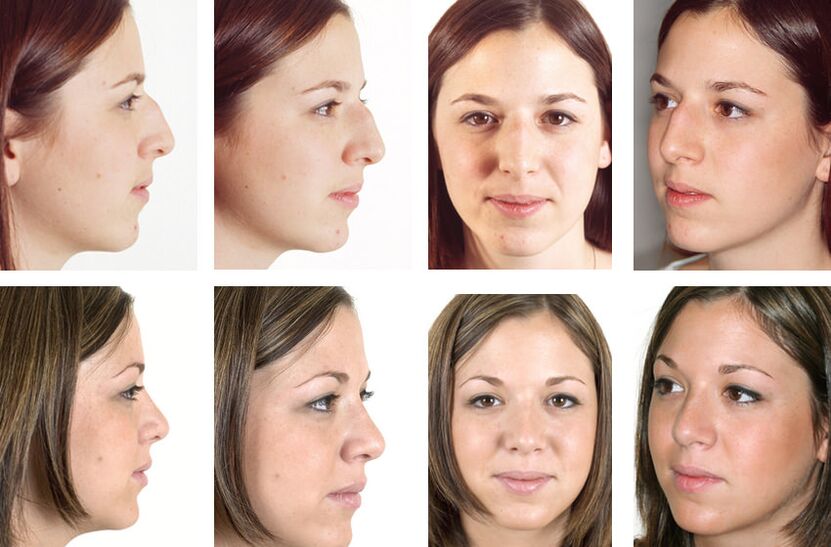
Indications for closed rhinoplasty:
- aesthetic (curve, ugly form of nose, nose deformation, etc. );
- Medical (nose injury, lack of breathing due to the wrong nose structure).
Contraindications to this type of work:
- the presence of mental illness in the patient;
- Inadequacy of the desire of the final result of the patient;
- the presence of diseases in which each rhinoplasty is contraindicated;
- Patient's implementation of several unsuccessful rhinoplastics earlier, which has greatly deformed the soft tissue of the nose.
Since the closed rhinoplasty is a rather complicated operation, after its behavior, the patient may have the following complications:
- Inflammation of nasal tissue;
- the formation of scars (rarely);
- forming pigmentation on the skin, which can remain forever;
- bleeding;
- nasal bleeding;
- swelling or hematoms around the nose;
- Incorrect nasal form, which will require secondary operation.
Open rhinoplastics
Open rhinoplasty, unlike closed, is performed with a small cut, diameter 4 - 5 mm. Thanks to the so far as a visible part, the skin nose can be completely erected, and then the surgeon will be much more suitable for working with open skeletons, as it will see it in front of it the entire outer structure of this organ, as opposed to closed rhinoplasty. This greatly reduces the chances of surgical error.
In addition, open rhinoplasty is recommended for primary work, as it can accurately remove all existing nose damage, as opposed to closed rhinoplasty, which cannot always guarantee the same result.
Rhinoplasty on secondary behavior
Medium rhinoplasty is done if the primary was unsuccessful and needs to correct complications. It can be performed and open and closed.
Rhinoplasty without surgery
Rhinoplasty without surgery is performed only in 4-7% of patients who can without surgery. Only minor nose deficiencies can be corrected with their help. Serious problems in the structure and appearance of the nose require only the complete rhinoplasty surgery.
Rhinoplasty when using fillers
This procedure is performed if the patient wants to eliminate only minor nose deficiencies. For example, these may be various less shortcomings, shortcomings, spreading the tip of the nose, the inaccuracy of its symmetry, etc. In these cases, doctors use special fillers that have been introduced into the bracket tissue and they corrected the problem.
The advantages of this method are that the restoration of the nose is after it is much easier, and the procedure itself is not as painful as an ordinary surgical intervention.
Disadvantages of rhinoplasty using fillers are the change in the structure of named tissue and possible "migration" on the surface of the applied drug.
Rhinoplasty using special auxiliary drugs
In order to perform such a procedure, surgeons use special medications based on hormones introduced into defective nasal zones.
The advantage of such rhinoplasty is that the patient is not subjected to surgical intervention. But the great lack of such rhinoplasty is that with an irregular dosley of the drug and its introduction to the wrong area on the nose, the patient may have different complications and deterioration of shortcomings.
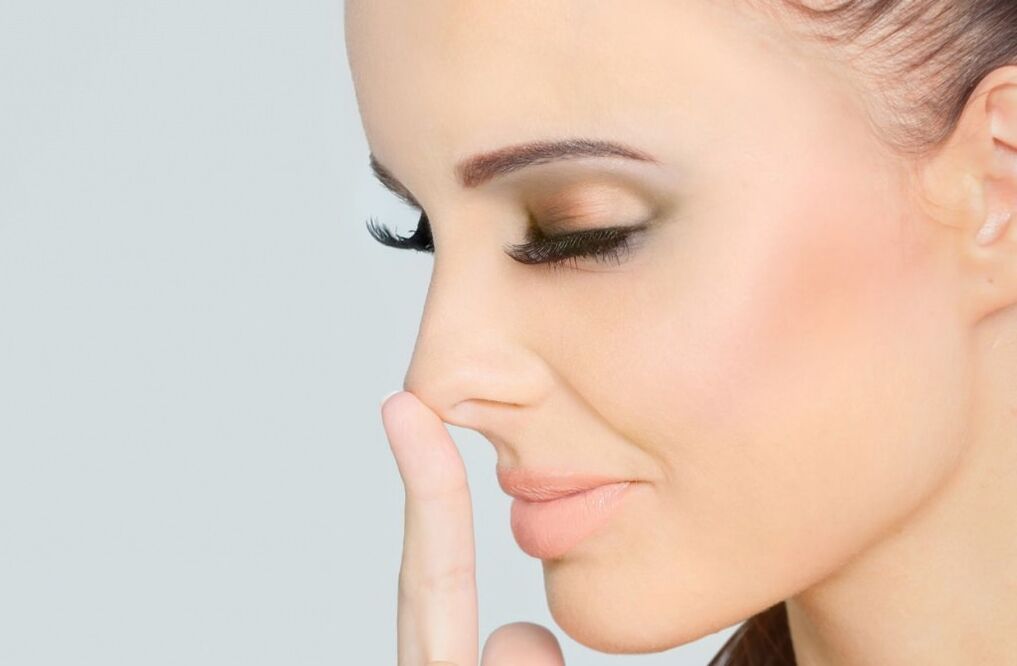
Rhinoplasty using topics
This procedure is performed with thread with which doctors pull their nose and nose wings. These threads through special breaks on the nose and, as it was, pull their nose.
Rhinoplasty using threads are not used surgeons, because there is a series of disadvantages:
- After the procedure, there is a high probability of forming scars;
- the appearance of contouring and ugly type of nose in "points";
- High probability of interrupts in threads, because the nose is very mobile in its structure, which provides for the unreliability of this procedure.
Benefits and disadvantages of rhinoplasty
Pluse Rhinoplastics:
- Satisfaction with your appearance after surgery;
- Complete removal of any defects in the successful procedure performed;
- Improving breathing in your preoperative disorders.
Anti-rhinoplasty:
- Possibility to acquire infection;
- Loss of sensitivity to the nose;
- bleeding;
- Failed to conduct work, complications;
- Deterioration in the appearance of nose and discontent with the end result.
Indications and contraindications
If a person has innate nasal flaws, but he can spend rhinoplastics with the beginning of adults. Generally, the age of 18 to 40 is considered the most appropriate age for this procedure, when the body is already formed, and a person is a balanced decision.
Indications for rhinoplasty:
- the presence of the coat of arms on the nose;
- Congenital nose shortages;
- Nasal flints of styrene injuries;
- violation or complete impossibility of breathing by nose;
- nostrils too wide volume;
- The nose is too long;
- Nose in the shape of a crumpled saddle;
- The nose of adding cancels;
- too fat nose;
- Too sharp nose.
Contraindications for rhinoplasty:
- Human minority (if injury is acquired as a child, then the procedure is possible in premature lines);
- Age after the fortieth anniversary (after this year, a person has a risk of all kinds of complications and aggravates the process of healing wounds);
- The presence of diabetes mellitus;
- all types of kidney or liver diseases;
- Problems with the coagulation of the patient's blood;
- Heavy heart disease and blood vessels;
- acute viral diseases;
- The presence of oncological diseases;
- presence of mental disorders;
- If there is no nasal damage, and rhinoplasty is simply not required.
Preparation for rhinoplasty
Since rhinoplasty is full of surgery, some time before, the patient should do the following:
- Pass a complete review for the presence of cardiovascular diseases.
- Transfer examinations and receive tips of therapists, neuropathologists, laura, anesthesiologists, surgeons that will implement the operation, etc.
- To talk to the surgeon all possible consequences of the operation and determined the future form of nose, width, etc. They also need to talk about the type of anesthesia with an anesthesiologist, who will use during surgery.
- Transfer all the necessary tests.
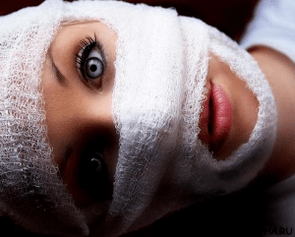
Execution of operations - phases
Rhinoplasty is done in these phases:
- The patient gives an anesthesia;
- Additional anesthesia is performed;
- After that, the surgeon makes a cut on the lower shell of the nose and begins directly to their work (such surgical intervention may be closed and open species);
- The surgeon adjusts all the nose deficiencies, corrects irregularities, shrubs, etc. , Depending on the specific problem of the patient;
- If necessary, it may replace the missing cart in the nose from its other zones or artificial cartilage implants;
- Upon completion of the operation, the surgeon sew nose and impose a bend for fastening.
Depending on the level of complexity and course of proceedings, rhinoplasty operation can last from 50 minutes to 2 hours. It should also be mentioned that the nose after the operation can be subjected to independent changes in the form of improvement or deterioration.
All this depends on the patient, his respect for medical recommendations and directly, the results of the operation itself, which will be visible only after 6-8 months.
Rehabilitation
After rhinoplasty, on the nose and around her region, vaccines, swelling and hematomas, who usually go in two weeks. After the patient's nose surgery, a special fastening bandage is applied, which must be carried within ten days. The tampons will also be inserted in the nose that will prevent bleeding, so the patient will not be able to breathe his nose for a while.
The result of work can be estimated in six months, and the final result is in a year. The wound delay after surgery depends on each person individually and the state of his vitality. If complications are observed after surgery, then treatment can be significantly increased.
After rhinoplasty, it is desirable to visit his surgeon to conduct nose inspections after rhinoplasty.
Recommendations before and after surgery
Before surgery, the patient follows:
- leave all bad habits (alcohol, greasy food, etc. );
- A few days before surgery, medications and products are prohibited, which cause a reduction in the coagulation of blood in the body.
After surgery, the patient should comply with the following requirements:
- In the first months after rhinoplasty, it cannot be included in Sports (Gymnastics, Run, etc. );
- Is undesirable to swim;
- Not eat too much hungry or hot food, to avoid bleeding;
- Wash carefully without touching your nose and zones around it;
- Avoid sharp changes in the expression of the face of the face of the face;
- Wear clothes that don't need to be removed over your head.
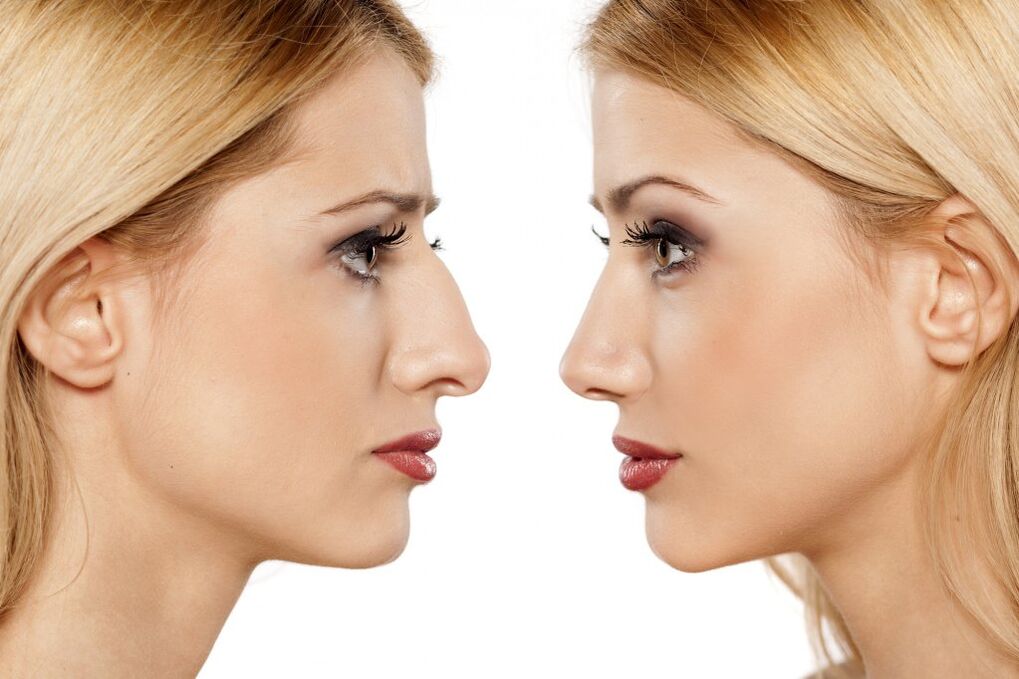
Possible complications after surgery
After rhinoplasty or during the proceedings, the following complications may appear:
- An anesthesia allergy.
- Abundant nasal bleeding.
- Edem from the zone nose (in the first weeks after the procedure) that may interfere with normal nasal breathing.
- Swelling on the face (in the eyes, cheeks and other parts of the face).
- The occurrence of hematomas on the face.
- Reducing the sensitivity of the skin of the nose or its absolute loss for a while.
- The risk of infection infection.
- Large scars can be formed to eliminate which other operation will be needed.
- Severe breathing after surgery (depending on the type of work and procedure). That will be performed with nasal cartilage.
- The occurrence of absence of smell or its partial loss.
- Stretching the skin or loss of its flexibility (happens with excessive cutting cartilage in the nose).
- Closely tissue.
- Formation of age spots or manifestation of blood vessels on the skin.
- Fatal outcome with anaphylactic shock.
- The patient's dissatisfaction with the final result of the proceedings.
- Failed course of the procedure by the wrong surgeon.
Scores
The first results of the surgery will be visible after 10-14 days. But the patient can see the final result only after 8-10 months, when all numerous edemas and bruises will go, and fabrics will "pass" on a new nose.
It often happens that relatives and friends do not notice significant changes in the prospect of the patient after surgery. Since hematomas and swelling will drown the entire result. In this case, the patient should not run immediately in repeated rhinoplasty, but should only be expected when the face reaches the usual shape, and then evaluate the final result.
Also, it should indicate that rhinoplasty does not give genetic effect and will not transfer a clan for children, because some patients can consider. This operation improves only the appearance of a person.




















